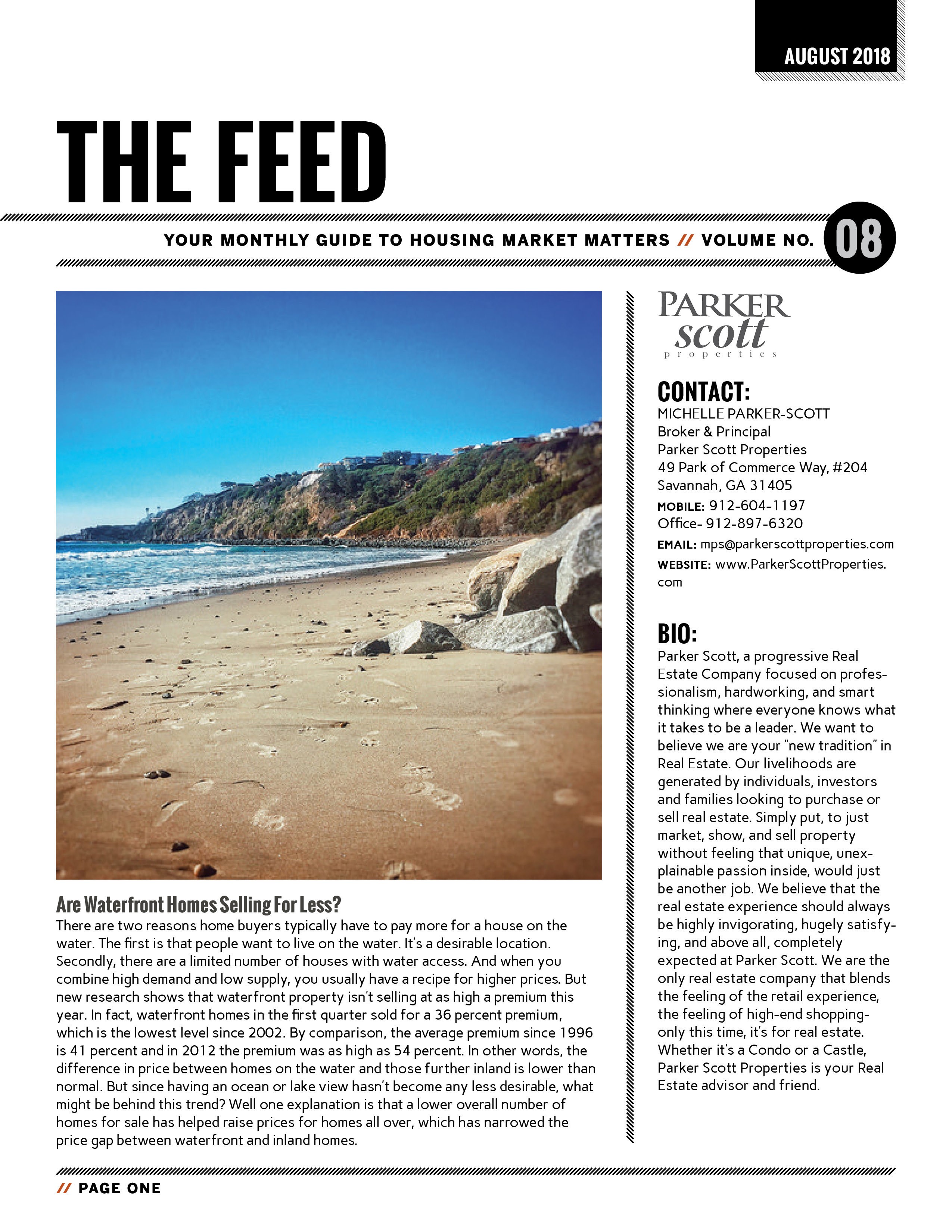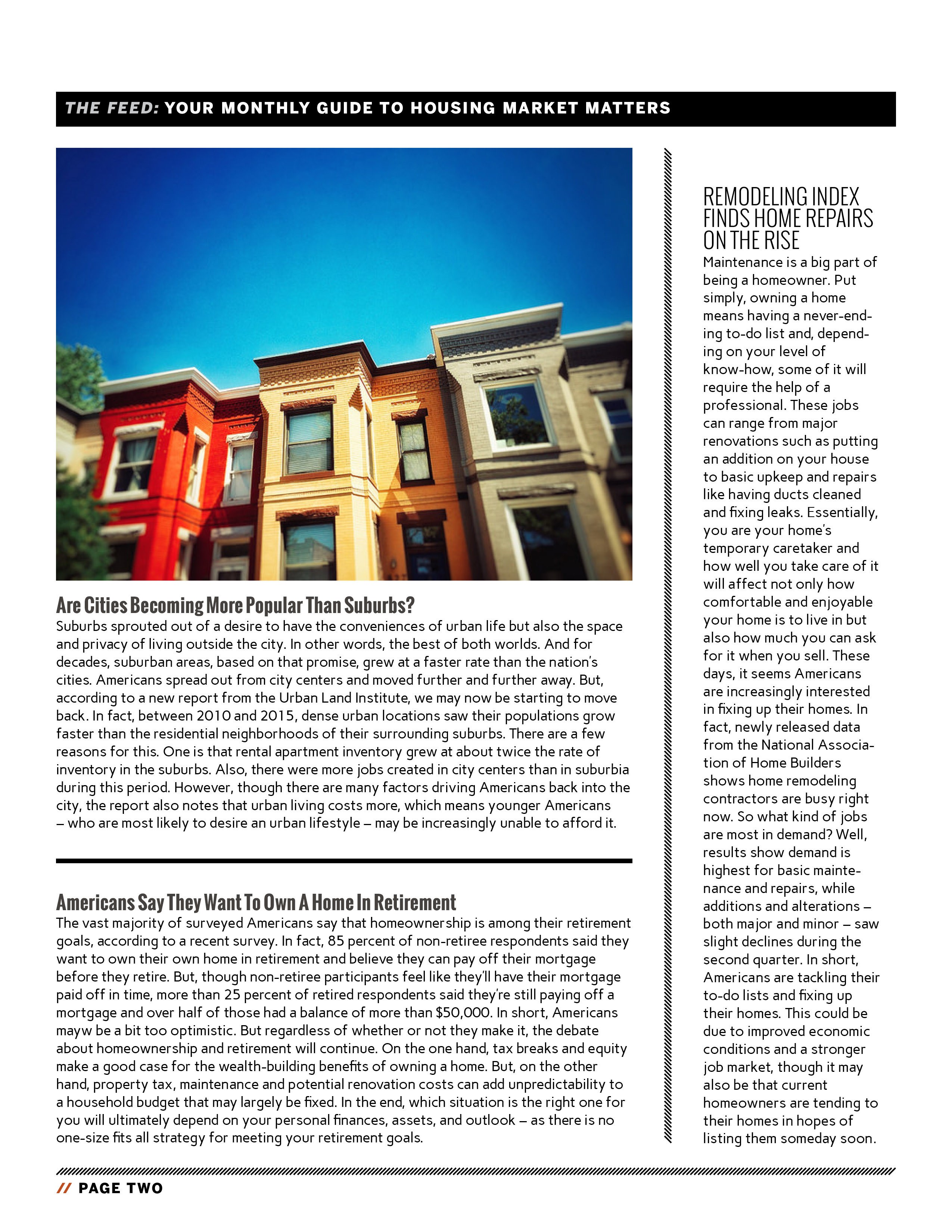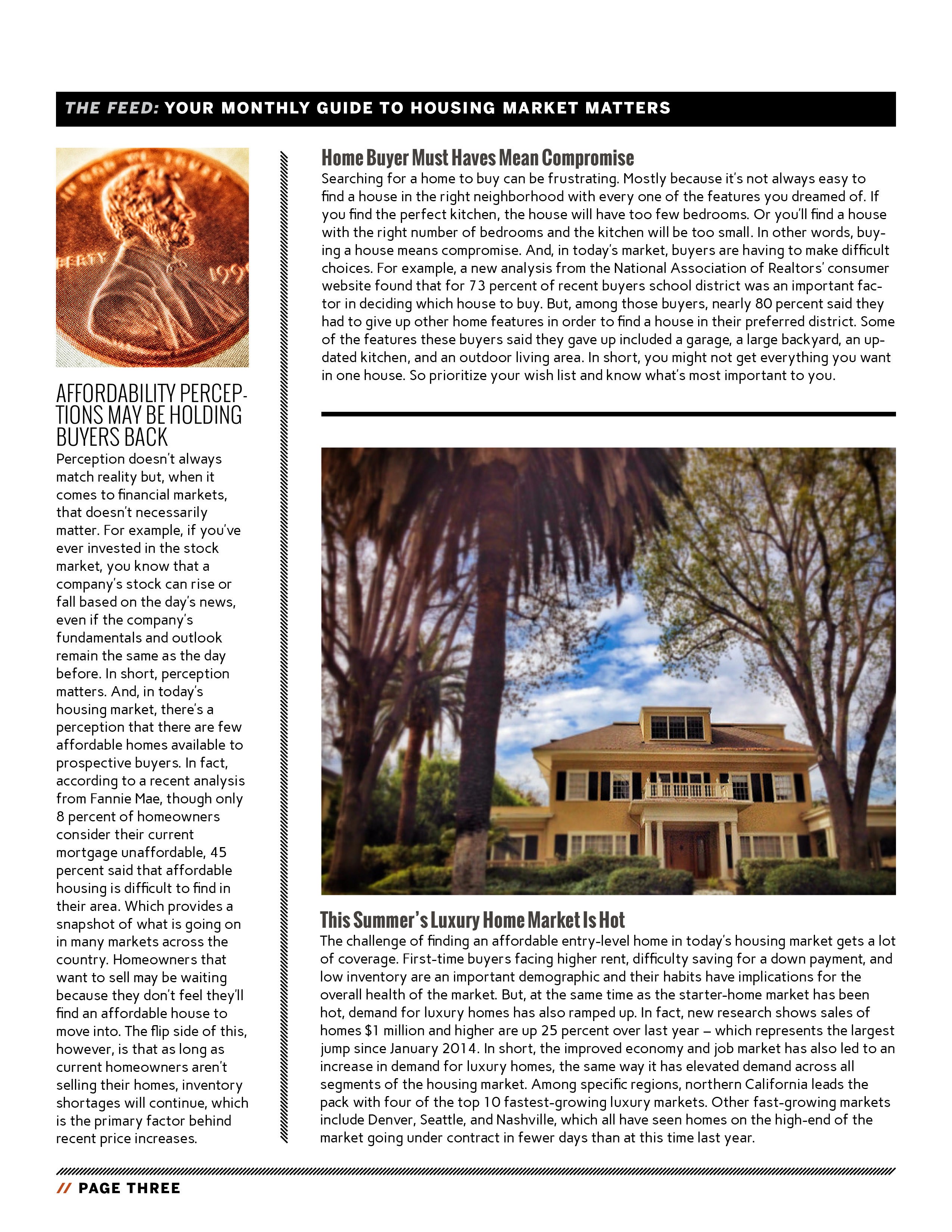Sales of previously owned homes were unchanged from the month before in August, according to new data from the National Association of Realtors. The number of available homes for sale was also flat, with unsold inventory at a 4.3-month supply at the current sales pace. But, though there was little change in the numbers, Lawrence Yun, NAR’s chief economist, says buyers may be getting ready to move. “Strong gains in the Northeast and a moderate uptick in the Midwest helped to balance out any losses in the South and West, halting months of downward momentum,” Yun said. “With inventory stabilizing and modestly rising, buyers appear ready to step back into the market.” In other words, though there hasn’t been a significant change in conditions, there is a sense that price increases and low inventory are beginning to move in the right direction. This can be seen in the regional results, which show that some areas are improving at a quicker pace than others. Another indicator that relief may be on the way is how long the typical property stayed on the market in August. That’s because, the number of days homes were available before selling moved up for the first time in months. But, despite the improvement, properties are still selling quickly. In fact, the typical home sold in just 29 days in August. More here.
Number Of Sellers Reducing Their Price Increases
Naturally, potential home buyers become more concerned about affordability conditions as prices and mortgage rates rise. And since the past few years have seen both things happen, there’s been increasing concern about whether or not now is a good time to buy a house. That’s not to say there hasn’t been demand for homes. In fact, there are plenty of interested buyers and not enough homes to accommodate them, which is why prices have been rising in the first place. But recently, there’s been more data suggesting that home prices are beginning to soften. In fact, one recent report shows that 26.6 percent of homes listed for sale in September dropped their price, which is a nearly 5 percent increase from the same time last year. That’s good news for buyers, as is the fact that price drops have been showing year-over-year improvement since the end of March. Added to the fact that mortgage rates, while higher than last year, are still well below what is historically normal, the news about home prices means affordability may, once again, be moving in a more balanced direction and one that benefits buyers. More here.
Where Buyers Are Stretching Their Budgets Most
When calculating how much house you can comfortably afford, there are a few commonly cited rules that can be used. Among them, the one that says your home’s price shouldn’t be more than three times your annual income is popular. Of course, there are many other factors that play a role, including the amount of debt you have, your retirement goals, other expenses, etc. However, as a simple rule, it can be a good way to quickly come up with a ballpark price range before you work out the fine details. Using a variation on this rule, a recent study took data from the Home Mortgage Disclosure Act and looked at the median amount home buyers borrowed and compared it to borrowers’ median income to calculate how and where buyers were pushing their financial limits to purchase a house. The results, in all but a few cases, weren’t that surprising. That’s because the cities where home buyers had to stretch the most were mostly out West, including Los Angeles, San Francisco, Denver, and Seattle. However, though rust-belt metros like Cleveland, Detroit, and Buffalo were the least leveraged, the middle of the pack included places like Atlanta, Orlando, Chicago, Dallas, and Houston, which might not be the first places thought of when listing affordable areas to buy a house. More here.
Financial Security Boosts Housing Sentiment
It’s said that there are two sides to every story. But there are also two sides to the calculations potential home buyers undergo when deciding whether or not it’s a good time for them to look for a new house. After all, buyers have to take into consideration the cost of homes in the areas they’re looking to live but also their own financial security. That’s why Fannie Mae’s most recent Home Purchase Sentiment Index is encouraging. Because, though Americans have concerns about housing affordability, they are feeling confident financially and secure in their jobs. In fact, the number of survey respondents who said they aren’t concerned about losing their job rose 15 percent over the month before and those reporting that their income is higher than it was 12 months earlier hit a new survey high. Doug Duncan, Fannie Mae’s chief economist, says Americans are feeling the effects of a stronger economy. “Consumers are attuned to the divergence between the slowing housing market and strong macro economy,” Duncan said. “Consumers were less optimistic this month about both home buying and home selling conditions, while perceptions of income growth and confidence about job security are at survey highs.” More here.

Fall Forecast Sees Improvement On The Horizon
There are many different factors that play a role in the housing market’s health. When home buyers and sellers decide that its time for them to make a move everything from their job security to the global economy has an effect. For example, economic instability half way around the world can move mortgage rates, which will affect how much house you can afford. But what you can afford is also affected by how much you earn and how secure you feel in your job. In short, there’s a lot to keep an eye on. That’s why it can be helpful to tune into expert forecasts and opinions, since most of us don’t have the time or inclination to weigh all of the moving parts that determine what it’ll cost to buy the home of our dreams. So what are the experts saying about the upcoming fall market? Well, according to Freddie Mac’s most recent outlook, there may be reason for optimism. That’s because, though they say fall buyers will face many of the same challenges that held summer sales back, Freddie Mac chief economist Sam Khater says there is good news to be found. “The good news is that the economy and labor market are very healthy right now, and mortgage rates, after surging earlier this year, have stabilized in recent months,” Khater says. “These factors should continue to create solid buyer demand, and ultimately an uptick in sales, in most parts of the country in the months ahead.” More here.
Is It A Good Time For You To Make A Move?
Home Buyer Must Haves Mean Compromise
 Searching for a home to buy can be frustrating. Mostly because it’s not always easy to find a house in the right neighborhood with every one of the features you dreamed of. If you find the perfect kitchen, the house will have too few bedrooms. Or you’ll find a house with the right number of bedrooms and the kitchen will be too small. In other words, buying a house means compromise. And, in today’s market, buyers are having to make difficult choices. For example, a new analysis from the National Association of Realtors’ consumer website found that for 73 percent of recent buyers school district was an important factor in deciding which house to buy. But, among those buyers, nearly 80 percent said they had to give up other home features in order to find a house in their preferred district. Some of the features these buyers said they gave up included a garage, a large backyard, an updated kitchen, and an outdoor living area. In short, you might not get everything you want in one house. So prioritize your wish list and know what’s most important to you. More here.
Searching for a home to buy can be frustrating. Mostly because it’s not always easy to find a house in the right neighborhood with every one of the features you dreamed of. If you find the perfect kitchen, the house will have too few bedrooms. Or you’ll find a house with the right number of bedrooms and the kitchen will be too small. In other words, buying a house means compromise. And, in today’s market, buyers are having to make difficult choices. For example, a new analysis from the National Association of Realtors’ consumer website found that for 73 percent of recent buyers school district was an important factor in deciding which house to buy. But, among those buyers, nearly 80 percent said they had to give up other home features in order to find a house in their preferred district. Some of the features these buyers said they gave up included a garage, a large backyard, an updated kitchen, and an outdoor living area. In short, you might not get everything you want in one house. So prioritize your wish list and know what’s most important to you. More here.
Buyers Come Out Despite Market Challenges
For the second straight month, sales of previously owned homes increased from one month earlier, according to new numbers from the National Association of Realtors. In fact, sales of single-family homes, townhomes, condos, and co-ops, rose 1.1 percent to an annual rate of 5.60 million in March. Lawrence Yun, NAR’s chief economist, says warmer weather may have had something to do with the sales pickup. “Robust gains last month in the Northeast and Midwest – a reversal from the weather-impacted declines seen in February – helped overall sales activity rise to its strongest pace since last November at 5.72 million,” Yun said. Put simply, low inventory and higher prices have made the housing market more challenging for buyers in some markets but overall demand is running high and, as the weather improves, may even see further gains. For interested buyers, that means available homes are selling fast this spring. The NAR reports that the typical property was on the market for just 30 days in March and half of the homes that sold were purchased in less than a month. More here.
August Newsletter




